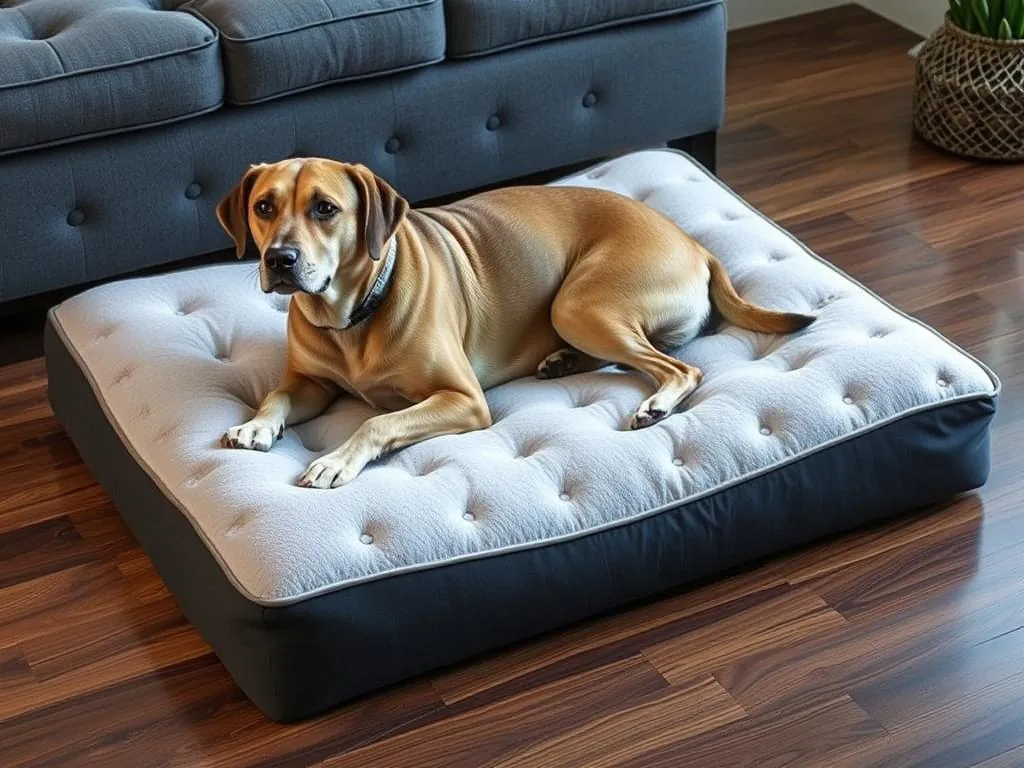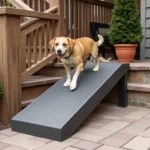
When it comes to providing your furry friend with the best possible comfort, a good dog bed plays a crucial role. With dogs spending a significant portion of their day resting, investing in a high-quality bed can make a world of difference in their overall well-being. Among the various types of dog beds available, memory foam dog beds have gained popularity for their exceptional support and comfort. This is especially true for older dogs or those with joint issues, as memory foam can alleviate pressure points and provide adequate support.
In this guide, we’ll delve into the world of memory foam dog beds, exploring their features, benefits, and providing top recommendations to help you make an informed choice for your beloved pet.
Understanding Memory Foam
What is Memory Foam?
Memory foam is a viscoelastic material that is designed to conform to the shape of the body while offering support. It is made from polyurethane and is often infused with additional materials to enhance its properties. The technology behind memory foam allows it to respond to temperature and weight, creating a personalized sleeping surface that adapts to the contours of your dog’s body.
Benefits of Memory Foam for Dogs
When it comes to memory foam dog beds, the benefits are numerous:
- Support for Joints and Bones: Memory foam provides excellent support, especially for dogs with arthritis or hip dysplasia, helping to reduce discomfort in their joints.
- Pressure Relief for Comfort: The material evenly distributes your dog’s weight, minimizing pressure on sensitive areas such as joints and bones, which is particularly essential for larger breeds.
- Temperature Regulation Properties: Many memory foam beds are designed with cooling gel-infused foam that helps regulate temperature, keeping your dog comfortable regardless of the season.
- Durability Compared to Other Materials: Memory foam is generally more durable than traditional mattress materials, making it a long-lasting investment for your dog’s comfort.
Factors to Consider When Choosing a Memory Foam Dog Bed
Size and Dimensions
Choosing the right size for your dog is crucial. A bed that is too small can lead to discomfort, while an oversized bed may leave your pet feeling insecure. Measure your dog from the tip of their nose to the base of their tail while they are standing, and use this measurement to determine the appropriate bed size.
Density and Thickness
The density of the foam is an important factor to consider. Higher density foam provides more support and is generally more durable, while lower density foam may compress over time. For larger breeds, a thickness of at least 4 inches is recommended, while smaller dogs may find comfort with beds that are 3 inches thick.
Cover Material
The cover of the dog bed can significantly impact its usability. Look for materials that are soft and durable, such as cotton or polyester. Waterproof covers are also a great option, especially for puppies or older dogs that may have accidents. It’s essential to choose beds with removable and washable covers to maintain hygiene.
Orthopedic Features
An orthopedic dog bed is specifically designed to provide extra support and comfort for dogs suffering from joint pain, arthritis, or other health issues. These beds often feature additional cushioning and are designed to promote proper spinal alignment.
Price Range
Memory foam dog beds come in various price ranges. While it may be tempting to opt for the cheapest option, it’s important to consider the balance between cost and quality. Investing in a high-quality memory foam bed can provide better support and comfort for your dog, ultimately saving you money in the long run by reducing the need for replacements.
Top Memory Foam Dog Beds on the Market
Review Criteria
To curate our list of the best memory foam dog beds, we considered customer reviews, expert opinions, and the overall features of each product. Our selections prioritize comfort, durability, and value for money.
Product Recommendations
Best Overall Memory Foam Dog Bed
PetFusion Ultimate Dog Bed
– Features: 4-inch solid memory foam base, water-resistant cover, non-slip bottom.
– Pros: Excellent support, removable cover, and a sleek design.
– Cons: Slightly higher price point.
– Price: Approximately $200.
Best Budget-Friendly Option
AmazonBasics Memory Foam Dog Bed
– Features: 3-inch memory foam base, soft cover, affordable price.
– Pros: Great value for money, comfortable, and easy to clean.
– Cons: Not as durable as higher-end options.
– Price: Approximately $50.
Best for Large Breeds
Big Barker 7″ Pillow Dog Bed
– Features: 7-inch thick memory foam, designed for larger breeds, comes with a 10-year warranty.
– Pros: Exceptional support for large dogs, durable, and easy to wash.
– Cons: Pricey compared to other options.
– Price: Approximately $300.
Best for Small Breeds
K&H Pet Products Tiny Dog Bed
– Features: 2-inch memory foam, compact size, removable cover.
– Pros: Perfect size for small dogs, affordable, and lightweight.
– Cons: Limited support for larger breeds.
– Price: Approximately $40.
Best Orthopedic Memory Foam Dog Bed
Furhaven Orthopedic Dog Bed
– Features: L-shaped design, orthopedic foam, soft faux fur cover.
– Pros: Great for dogs with arthritis, multiple size options, and budget-friendly.
– Cons: Foam may compress over time.
– Price: Approximately $100.
Comparison Table
| Product | Size Options | Price | Key Feature |
|---|---|---|---|
| PetFusion Ultimate Dog Bed | Medium, Large, XL | ~$200 | Water-resistant cover |
| AmazonBasics Memory Foam Dog Bed | Small, Medium, Large | ~$50 | Affordable and comfortable |
| Big Barker 7″ Pillow Dog Bed | Large | ~$300 | 10-year warranty |
| K&H Pet Products Tiny Dog Bed | Small | ~$40 | Perfect for small dogs |
| Furhaven Orthopedic Dog Bed | Various | ~$100 | L-shaped for orthopedic support |
Maintenance and Care for Memory Foam Dog Beds
Cleaning Tips
To keep your memory foam dog bed in good condition, follow these cleaning tips:
- Regular Vacuuming: Use a vacuum cleaner with a pet hair attachment to remove loose fur and debris.
- Spot Cleaning: For stains, use a damp cloth with a pet-safe cleaner to gently blot the area. Avoid soaking the foam, as this can damage its integrity.
- Wash Covers: If the bed has a removable cover, wash it according to the manufacturer’s instructions. Most are machine washable for easy maintenance.
Longevity Tips
To extend the lifespan of your dog bed, consider the following:
- Rotate the Bed: Regularly rotate the bed to prevent uneven wear.
- Keep it Dry: Ensure the bed is kept dry and clean to prevent mold and mildew.
- Monitor for Damage: Check for signs of wear and tear, such as fraying or compressed foam. Replace the bed if you notice significant deterioration.
Conclusion
Investing in the best memory foam dog beds can greatly enhance your dog’s comfort and overall health. With their superior support, pressure relief, and durability, memory foam beds are an excellent choice, especially for older or arthritic dogs. When selecting a bed, consider your dog’s size, specific needs, and your budget to find the perfect match. Prioritize your dog’s comfort and health by choosing a bed that meets their unique requirements, ensuring they enjoy restful sleep for years to come.
FAQs
How often should I replace my dog’s bed?
It’s generally recommended to replace your dog’s bed every 1-2 years, depending on wear and tear, but always assess the condition of the bed regularly.
Are memory foam beds safe for puppies?
Yes, memory foam beds are safe for puppies. However, ensure that the bed is appropriately sized and provides adequate support for their growing bodies.
How do I know if my dog likes their new bed?
Watch for signs such as frequent use, relaxation, and comfort when lying on the bed. If your dog settles down and sleeps well, it’s a good indicator they like their new bed.
What is the best way to introduce my dog to a new bed?
Place the new bed in a familiar area and encourage your dog to explore it. You can use treats or toys to entice them to use the bed.
Are there hypoallergenic memory foam dog beds available?
Yes, there are hypoallergenic options available in the market. Look for beds made with hypoallergenic materials to reduce allergens and provide a safe sleeping environment for your dog.









